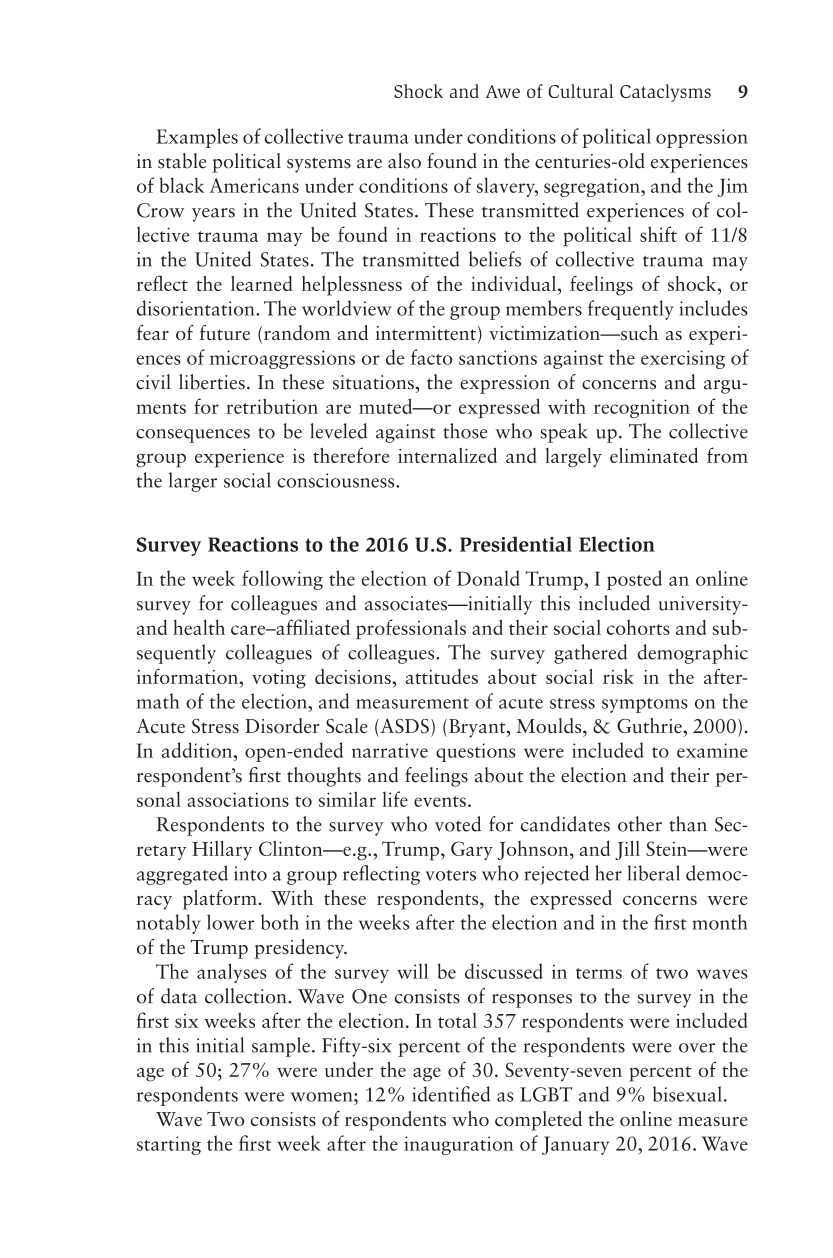Shock and Awe of Cultural Cataclysms 9
Examples of collective trauma under conditions of political oppression
in stable political systems are also found in the centuries-old experiences
of black Americans under conditions of slavery, segregation, and the Jim
Crow years in the United States. These transmitted experiences of col-
lective trauma may be found in reactions to the political shift of 11/8
in the United States. The transmitted beliefs of collective trauma may
reflect the learned helplessness of the individual, feelings of shock, or
disorientation. The worldview of the group members frequently includes
fear of future (random and intermittent) victimization—such as experi-
ences of microaggressions or de facto sanctions against the exercising of
civil liberties. In these situations, the expression of concerns and argu-
ments for retribution are muted—or expressed with recognition of the
consequences to be leveled against those who speak up. The collective
group experience is therefore internalized and largely eliminated from
the larger social consciousness.
Survey Reactions to the 2016 U.S. Presidential Election
In the week following the election of Donald Trump, I posted an online
survey for colleagues and associates—initially this included university-
and health care–affiliated professionals and their social cohorts and sub-
sequently colleagues of colleagues. The survey gathered demographic
information, voting decisions, attitudes about social risk in the after-
math of the election, and measurement of acute stress symptoms on the
Acute Stress Disorder Scale (ASDS) (Bryant, Moulds, & Guthrie, 2000).
In addition, open-ended narrative questions were included to examine
respondent’s first thoughts and feelings about the election and their per-
sonal associations to similar life events.
Respondents to the survey who voted for candidates other than Sec-
retary Hillary Clinton—e.g., Trump, Gary Johnson, and Jill Stein—were
aggregated into a group reflecting voters who rejected her liberal democ-
racy platform. With these respondents, the expressed concerns were
notably lower both in the weeks after the election and in the first month
of the Trump presidency.
The analyses of the survey will be discussed in terms of two waves
of data collection. Wave One consists of responses to the survey in the
first six weeks after the election. In total 357 respondents were included
in this initial sample. Fifty-six percent of the respondents were over the
age of 50; 27% were under the age of 30. Seventy-seven percent of the
respondents were women; 12% identified as LGBT and 9% bisexual.
Wave Two consists of respondents who completed the online measure
starting the first week after the inauguration of January 20, 2016. Wave







































































































































































































































































